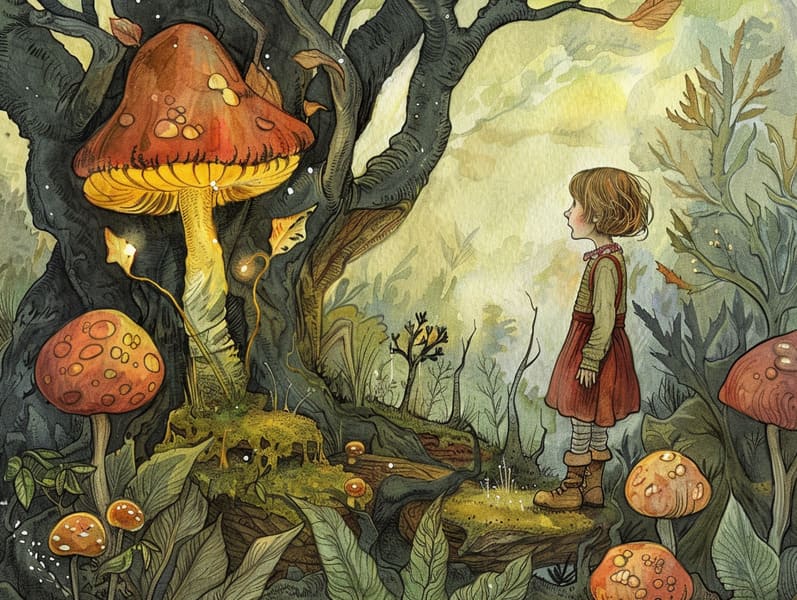Exploring the Roots of Best Fairy Tales and Its Steadfast Appeal.
Exploring the Roots of Best Fairy Tales and Its Steadfast Appeal.
Blog Article

Popular fairy tales have ancient roots. These narratives have been told from one generation to the next far before they were ever inscribed. They sprang from a variety of backgrounds, including American traditions. They were initially shared among mature audiences, often carrying themes and messages pertaining to the societal norms and beliefs of the time.
The famous Grimm duo, Jacob and Wilhelm, were among the first to compile many of these beloved tales. Their compilation, "Grimm's Folk Tales," included tales like "The Story of Cinderella," "Little Brother and Little Sister," and "The True Story of Snow White," which have since become cornerstones in the world of iconic fairy tales. Similarly, Hans Christian Andersen's charming stories, such as "The Little Mermaid," and "The Ugly Duckling," have captivated hearts worldwide, guaranteeing their place in the pantheon of famous fairy tales.
Despite their historical roots, classic fairy tales remain as meaningful as ever, especially as children's night stories. These whimsical stories are now available in diverse formats, including richly illustrated books, fantastical animations, and internet fairy tales.
Their lasting appeal can be attributed to several delightful features:
Life Lessons: Timeless fairy tales often provide important moral lessons. Tales like "The Story of the Boy Who Cried Wolf" teach the merit of sincerity, while "The Race of the Tortoise and the Hare" emphasize the qualities of steadfastness and humbleness. These tales offer young ones clear distinctions between good and bad, shaping their moral compass in a gentle yet deep way.
Compassion and Insight: Timeless fairy tales frequently portray heroines facing tests and troubles, encouraging young listeners to understand with their struggles and boost their triumphs. For instance, "The Story of Beauty and the Beast" emphasizes the importance of seeing beyond the surface to see the true nature of a character, enhancing perception and appreciation.
Cultural Perception: Many old fairy tales are deeply embedded in the cultural contexts from which they developed. Learning from these narratives can provide illuminating insights into different societies, cultivating a sense of world understanding and respect.
Inventiveness and Imagination: The enchanted elements in old fairy tales—enchanted forests—activate children’s creativity. These tales guide readers to extraordinary realms, revitalizing creative ideas and a sense of astonishment that continues a lifetime.
Old fairy tales are not only magical but also edifying. They serve as bewitching tools in enhancing various cognitive and emotional skills in young readers. When traditional fairy tales are spoken, they strengthen speaking abilities by showing new linguistic elements and sophisticated sentence structures. This practice also fosters hearing perception and concentration, as young readers track the narrative, keen to see what happens next.
Furthermore, debating the themes and characters of traditional fairy tales can foster logical thinking and problem-solving abilities. Young readers learn to discern patterns, expect results, and understand cause and effect. These contemplations also further children communicate their thoughts and feelings, contributing to their emotional intelligence.
In today’s cyber age, the prevalence of digital fairy tales has made these narratives more reachable than ever. Web platforms and mobile apps feature large libraries of famous fairy tales that can be read or listened to anytime, anywhere. Fairy tales read out loud are particularly sought after, making available an interactive method for children to appreciate these bewitching tales. Sound books and read-aloud videos take characters and settings to life, often accompanied by fantastical melodies and tunes that augment the narrative journey.
The timeless appeal of ancient fairy tales lies in their ability to transform to modern days while staying true to their essential themes. Contemporary retellings of these narratives often include more multicultural figures and modern settings, making them relevant to today’s audience. However, the fundamental themes of boldness, warmth, and truth remain unchanged, continuing to reach young readers of all ages.
Ancient fairy tales also offer a sense of calm and closeness. They furnish a coherent narrative with a definite beginning, middle, and end, often finishing with the settlement of conflicts and the triumph of right over wrong. This reliability can be solacing for little ones, proffering a sense of consistency in an inconstant more info world.
Timeless fairy tales continue to entrance and instruct new generations, maintaining their charm and impact in modern society. As kids' bedtime tales, they present a perfect blend of magic and knowledge, aiding moral values, empathy, and creativity. The availability of digital fairy tales and the likability of fairy tales narrated make sure that these traditional tales remain acquirable to new generations.
By safeguarding and narrating these tales, we continue to exalt the rich tapestry of cultural legacy and cultural heritage. Whether you are exploring a beautifully illustrated book, perusing a web collection, or hearing an audio story, the grace of children's fairy tales is always within reach. These stories reveal of the timeless nature of tales and its ability to bond us across epochs and places.
Be it you are experiencing a artistically illustrated book, experiencing a virtual collection, or playing an audio story, the mystique of popular fairy tales is always within reach.
These narratives illustrate of the endless spell of storytelling and its ability to hold us together across eras and regions, forging a link that delights and instructs alike.